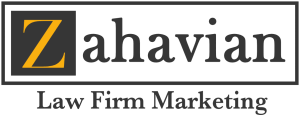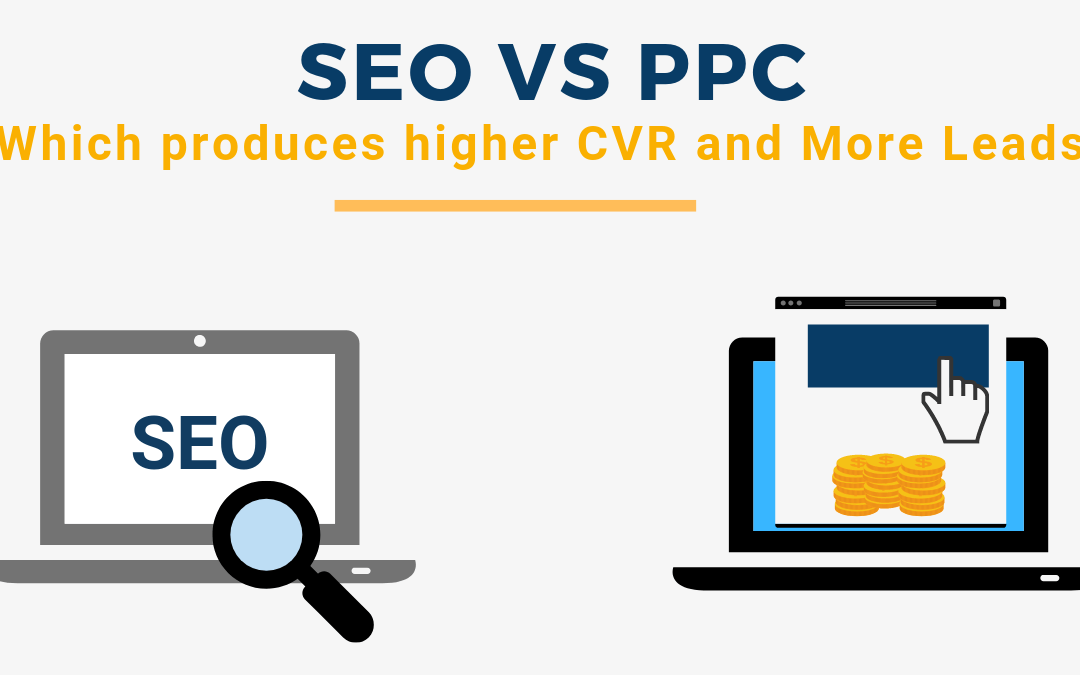In digital and internet marketing, like any other form of marketing (or business function for that matter), it’s important to know what is driving results and what doesn’t. It’s how businesses make cheaper goods and services, grow and thrive. Within internet marketing are 2 big behemoths: SEO and PPC (pay-per-click). There are many things that you can measure from either. But at the end of the day, it’s important to determine which is going to produce the greatest return on investment and keep the phone lines ringing. This brings us to our core question.
What produces more leads and conversions, PPC or SEO? In general, where both PPC and SEO produce equal amounts of traffic to a website, Organic traffic resulting from SEO will produce more leads and therefore, a higher conversion rate (CVR) than PPC will.
However, the answer isn’t so straight forward. It depends on several different things, such as what PPC channels are your business relying on, the messaging for so forth. In terms of organic traffic producing more leads, we need to investigate what is driving organic traffic. In this article, we’re going to look in-depth at:
- How leads are driven from organic vs. PPC traffic
- Quality of PPC channels and how this impacts CVR and # of leads
- Metrics to understand CVR and leads from organic traffic and PPC channels
Does SEO or PPC Drive More Leads?
We already stated above that in general. Organic traffic drives more leads. Organic traffic refers to traffic you get from search engines without paying for it through ads. This is the organic results you’ve probably heard and seek out when you perform a Google or Bing search. The process of optimizing your website to acquire as much relevant, organic traffic as possible is SEO (Search Engine Optimization).
If your site is linked with an analytics tool, such as Google Analytics, it becomes fairly easy to see whether leads are driven through organic or PPC channels. This assumes that you have set up your goal and conversion tracking.
This screenshot above was taken from one of our client’s Google Analytics accounts, over the course of a month, while we were running a relatively small Display Ads campaign for them. Take note, that we’re testing audiences for them and therefore only running a small budget to test before scaling their campaign.
However, what’s interesting to note is that the traffic from the display campaign is just slightly larger than the organic traffic for that period (353 PPC users vs. 327 organic users).
However, we can see the relatively small number of paid traffic conversions relative to users organically finding the site through search engines like Google and Bing. There are several points of interest here. Organic traffic is producing 1376% more goal completions than paid traffic and generating 2265% more in terms of traffic value ($29,450 vs. $1,300).
Now, this does include brand searches for the firm – as brand building is very important. However, a significant share of this still comes from target keywords from people searching for a law firm like that of this client.
Let’s break these metrics down a little differently.
Traffic Value per User
The site produced $37,500 in traffic value from goal completions across 1087 users in this period. That means, on average, every site user generated $34.49 in value for this firm.
If we calculate the traffic value for just organic, that works out to $29,450 over 327 users. That yields an average value per user of $90.06 compared to $3.68 per user from paid traffic channel (Display ads campaign) for the same analytics reporting period. To be fair, if we dug really deep into the story. The paid traffic channel’s conversions could be producing some wildly profitable cases for this firm that simply isn’t being taken into account by the analytics.
In fact, part of the purpose of this campaign was to generate more of the high-value cases for this law firm.
That leads us to the next point, in how these leads are being measured.
How Is It Measured?
I left off by mentioning that the metrics may be treating the PPC campaign a little too unfairly. Whenever we use data and statistics to support our reasoning and findings, we need to understand how good or true the data is. The traffic value above is generated from a feature within Google Analytics called “goals”. Each goal can be assigned a dollar figure value or not.
For instance, a large part of the goal conversions, as you may have seen in the screenshots, include “Engage 5 mins” and “Engage 10 mins”. These are just quick, soft goals to let us know at a quick glance how long visitors are staying on and engaging with the site. They attribute $0 in traffic value.
Whenever someone clicks on the firm’s phone number to call or submits a contact form, those have fixed dollar goal values that contribute to the total goal value. These are estimated based on assumptions of how much a new case is worth to the firm and how many new leads (phone calls and form submissions) it requires to generate a new case.
Since the firm practices in different areas of law, some cases are worth thousands, in the five figures and other times six figures and up. Because of this, we set an average case value, based on how much the average new case is worth to the firm.
With the PPC ads to be fair, the display ad campaign, in this case, is targeting the higher value cases. So while the analytics calculations work out to be a small fraction of the organic traffic’s value, this is wildly underestimated compared to reality.
Why Organic Traffic Has a Higher Conversion Rate Than PPC?
When it comes to organic traffic versus PPC traffic and even Facebook, the first thing you should compare is the Bounce Rate of the three channels. Facebook and Paid are extremely high at 85 and 88% respectively, compared to just 38% for organic. This means that the vast majority of people that visit the site from display and facebook ads are leaving the site almost immediately after landing on the page.
The reason all has to do with the behavior of the users coming to the site from these different channels. One may think that the user experience is poor. However, if that were true, then the organic traffic bounce rate should arguably be higher and closer to the other two channels, which share an almost identical bounce rate. Organic’s bounce rate is approximately 50% lower, though. This is because, when people visit the site through organic search, they are actively looking for the site or a website like this one.
Traffic from paid and social media will be due to a variety of reasons. First off involves unintentional clicks. This is particularly true of touchscreen devices like phones and tablets. The second is due to the environment.
Display ads are shown on YouTube, mobile apps and third-party website with ads embedded on them. So when people visit this website from one of those sources, it interrupts what they were previously doing.
The same can be said about visitors coming from social media sites and apps like Facebook. Hence, a considerable amount of the bounce rate can be attributed to them clicking the back button on their browser or closing the new window.
How You Can Increase PPC Conversion Rate
When it comes to increasing your PPC conversion rate, one way to do this is by decreasing the bounce rate. However, do not expect to get the bounce rate anywhere near the bounce rate of organic traffic. With that said, there are several ways to reduce bounce rate and increase the conversion rate.
Google and Bing Search Ads
Using relevant search ads that appear in the search results is a great way to appear in Google and Bing when SEO and organic traffic just isn’t enough. These are ads that for the most part, look just like organic results.
Because people are actively searching for keywords related to your business, when they click on your ad, they’re more likely to stay on your page and even more likely to convert. This is due to user intent. In other words, the fact that they’re actively searching for a result exactly matching or similar to your ad. Unlike the alternative, being passively served a banner ad or Facebook ad that interrupts their previous activity.
You can expect much higher conversion rates and lower bounce rates. These metrics will be significantly closer to that of organic traffic compared to Display and Facebook paid traffic sources.
Target More Relevant Audiences for Display and Facebook Ads
One of the most important parts of making a Display or Facebook ads campaign profitable is in targeting the right audience. Both platforms offer many similar targeting options, yet both offer separate and unique targeting features. When using both, you can implement a marketing strategy where they compliment each other.
For example, you can use Display ads to build custom intent audiences that hyper-target people based on past behaviors. Whereas, Facebook can be used to re-target ads to people who have previously visited your site but didn’t convert or contact your business.
Related Questions
Is SEO better than PPC? For the most part, SEO and PPC are complimentary internet marketing strategies rather than competing strategies. When implemented correctly, both can be very lucrative for generating new business. SEO takes longer to see results, whereas PPC can be turned on and off on-demand.
How can your lower bounce rate on display ads? It is not uncommon for display ads to have higher bounce rates than organic traffic. Lowering bounce rates for display ads requires:
- Creating relevant ad copy
- Relevant landing page experience
- Targeting the right audiences
- Consistent ad messaging
How much does PPC Cost for Small Businesses? PPC ads vary in price depending on the type of ad. On average, Display ads cost between $0.50 and $0.80 per click. Search ads vary widely based on industry. Costs range from $5 per click for a plumber up to $100 per click for law firm ads.
What’s the difference between PPC and SEM Ads? PPC stands for Pay Per Click and describes the charge model for the majority of online advertising: only paying when the ad is clicked. SEM (Search Engine Marketing) ads are a subset of PPC, that only appear above the search results in search engines like Google or Bing.


